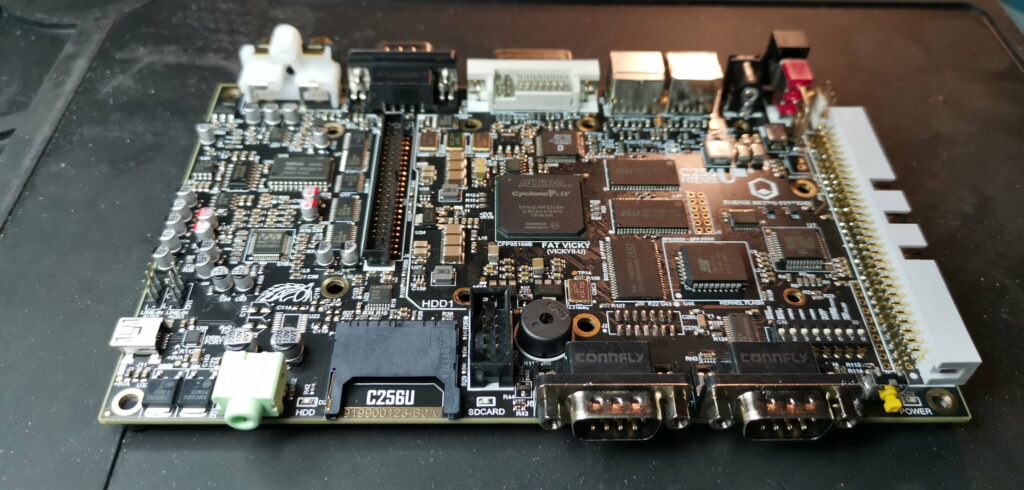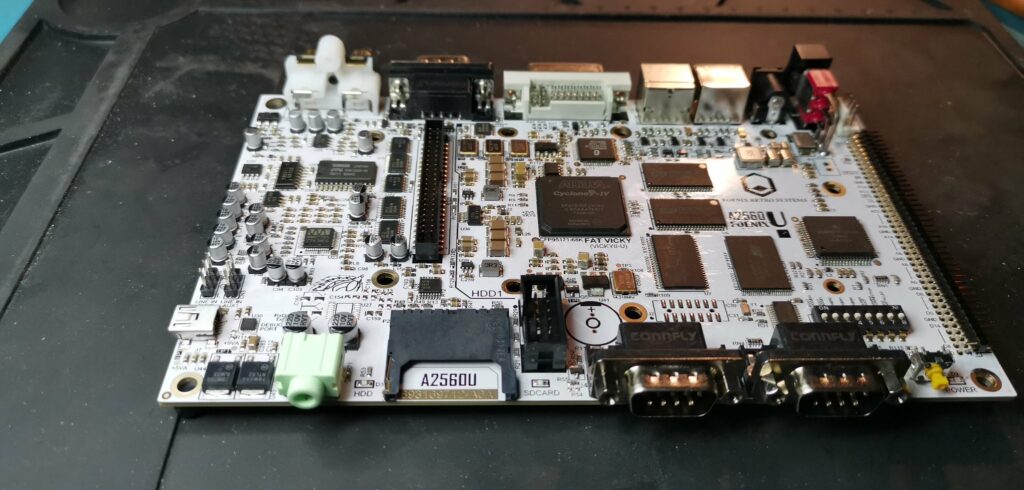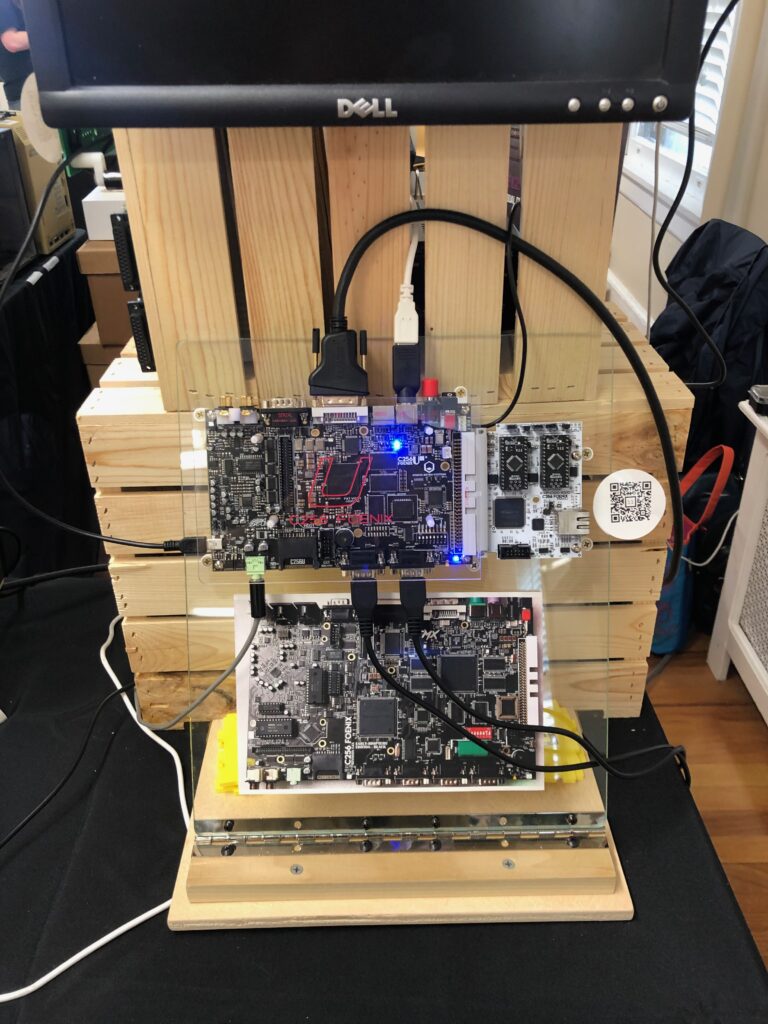The middle: The Foenix C256U and U+
The everything-and-the-kitchen-sink feature list of the Foenix FMX was the best of times, and units were finally shipping in quantity; then COVID induced supply chain issues struck.
The FMX leveraged a diverse set of curated ICs including prior versions of Altera FPGAs and audio ICs that were suddenly difficult to find or prohibitively expensive.
In response, Stefany spun-up a new lower-cost “User” model, named the ‘C256U’. The ‘U’ required only a single FPGA, did not leverage the SuperIO IC, had a limited set of physical Sound ICs, did not have MIDI, and had other limitations. But it enabled Stefany to keep shipping product and to put her technology in the hands of more people.

It was also an important stepping stone that opened the door for the introduction of the 20 MHz. MC68SEC000 microprocessor and as a result, the A2560 family was born.

Both families (C256 and A2560) were available at two price points; the ‘U’ had 2MB of RAM, and the slightly more expensive ‘U+’ doubled the memory to 4MB.
A specialized case was created and leveraged addressable LED lighting, however, was delayed due to other manufacturing backlogs. As a result, many SBC (single-board-computers) versions of ‘User’ Foenix systems exist in the wild and the system in front of you is one of them.
This particular C256U (mine) has the exp-c100-esid module, which attaches to the expansion bus and provides sockets for two SID chips and a CAT5 Ethernet. A second add-on module, the exp-c200-evid offered dual-head display by adding a text-only channel.

C256U+ with the eSID expansion board running at VCF Spring in New Jersey April, 2022.
Below it is a picture of an FMX board (not to scale). in real life a C256U or A2560U is about 1/2 the size of an FMX board (without expansion add-ons)